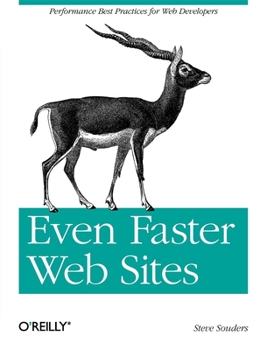Even Faster Web Sites: Performance Best Practices for Web Developers
Select Format
Select Condition 
Book Overview
Souders' previous book, the bestselling High Performance Web Sites, shocked the web development world by revealing that 80% of the time it takes for a web page to load is on the client side. In Even Faster Web Sites, Souders and eight expert contributors provide best practices and pragmatic advice for improving your site's performance in three critical categories:
JavaScript--Get advice for understanding Ajax performance, writing efficient JavaScript, creating responsive applications, loading scripts without blocking other components, and more. Network--Learn to share resources across multiple domains, reduce image size without loss of quality, and use chunked encoding to render pages faster. Browser--Discover alternatives to iframes, how to simplify CSS selectors, and other techniques.
Speed is essential for today's rich media web sites and Web 2.0 applications. With this book, you'll learn how to shave precious seconds off your sites' load times and make them respond even faster.
This book contains six guest chapters contributed by Dion Almaer, Doug Crockford, Ben Galbraith, Tony Gentilcore, Dylan Schiemann, Stoyan Stefanov, Nicole Sullivan, and Nicholas C. Zakas.





